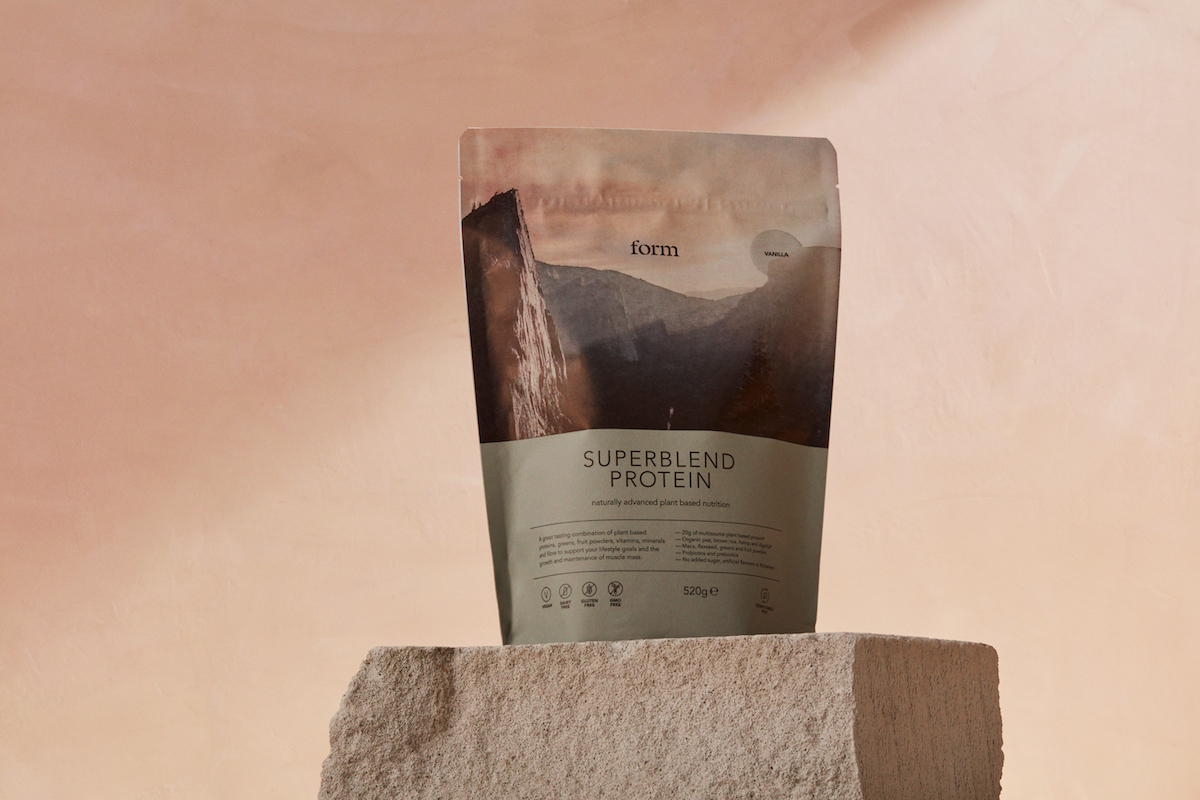What Are Digestive Enzymes and How Do They Help You Absorb Protein More Quickly?

If only you could shovel the macros you need into your body and be done with it. Unfortunately, there’s the small matter of digestion once that protein shake passes your lips. Your digestive system breaks nutrients into parts small enough for your body to absorb and use for energy, growth, and cell repair. Any disruption in the process can cause serious discomfort; not exactly what you need when you’re about to get down for a set of hip thrusts. And that’s where digestive enzymes in your protein shake could help take your training to the next level.
Plant v. Animal Protein
Let’s just start off by explaining the difference between your protein shakes. Dairy proteins such as whey are higher in simple sugars such as lactose, while plant proteins and vegan protein powder tends to be higher in complex carbohydrates and fibre. The latter nutrient plays a major role in digestive health. Fibre fuels the colon cells to keep them healthy, and also helps to keep the digestive tract flowing, by keeping your bowel movements soft and regular.
Plant protein’s complex carb and fibre levels make them an intermediate digesting protein, somewhere in between whey and casein, commonly known as fast (whey) and slow (casein).
The other main difference between plant and animal proteins is in their amino acid levels. Amino acids are the building blocks of protein, and when the body digests the proteins in food, it breaks them down into amino acids.

The body may need different amino acids at different times which is why it’s handy to include complete sources of protein, which contain all nine essential amino acids, in your diet. A lot of animal products are complete sources, but there are also some in plant foods too, like quinoa and buckwheat.
It is important for vegetarians and vegans to mix their protein sources though, to ensure that they are getting all of the essential amino acids from their diet.
On To The Digestive Enzymes…
Ok, on to the enzymes. Protein digestion begins when you first start chewing. There are two digestive enzymes in your saliva called amylase and lipase. They mostly break down carbohydrates and fats.
Once a protein source reaches your stomach, hydrochloric acid and enzymes called proteases, break it down into smaller chains of amino acids. Amino acids are joined together by peptides, which are broken by proteases.
From your stomach, these smaller chains of amino acids move into your small intestine. As this happens, your pancreas releases enzymes and a bicarbonate buffer that reduces the acidity of digested food. This reduction allows more digestive enzymes to work on further breaking down amino acid chains into individual amino acids.

Digestive Enzymes With Your Shake
Digestive enzyme research has looked at how consumption of some of these digestive enzymes, alongside plant based proteins, can affect differences in amino acid appearance in the blood between plant and animal proteins.
A study published in the Journal of the International Society of Sports Nutrition looked at measuring the time it took for the amino acid levels in your blood to hit their peak after taking whey protein, rice protein and pea protein plus digestive enzymes.
The time to get to peak total amino acid levels were, as expected quicker for whey than rice. But the addition of digestive enzymes to pea and rice protein blends was shown to increase time to peak and peak concentrations of amino acids in the blood. Put simply this means the digestive enzymes help your body breakdown and absorb the protein more quickly.
This is one of the reasons we include digestive enzymes in our proteins Superblend Protein and Performance Protein, so you can hit that post-workout peak, recover, and get back to setting some PBs.


















